Today, I would like to analyze the working principles of ADC.
1. Analog to Digital Conversion
Analog to Digital Conversion serves as a conversion station for transforming analog signals into digital signals. Analog signals are susceptible to interference, are easily limited by other conditions during signal processing, and are difficult to store. Therefore, in practical processing, they are often converted into digital signals. When outputting, they are converted back into analog signals, a typical application being Class D amplifiers.
The ADC signal chain includes at least five components: front-end sensors, signal conditioning, anti-aliasing filters, input protection, and the ADC itself. In the analog section, the ADC is the terminal, while in the digital section, the ADC is the input, making the ADC the core module linking analog and digital signals.
2. Working Principles of ADC
The ADC completes the transformation of analog signals into digital signals. The devices that achieve ADC conversion mainly include the following four processes: Sampling — Holding — Quantizing — Encoding.
 The corresponding circuit is shown below:
The corresponding circuit is shown below:
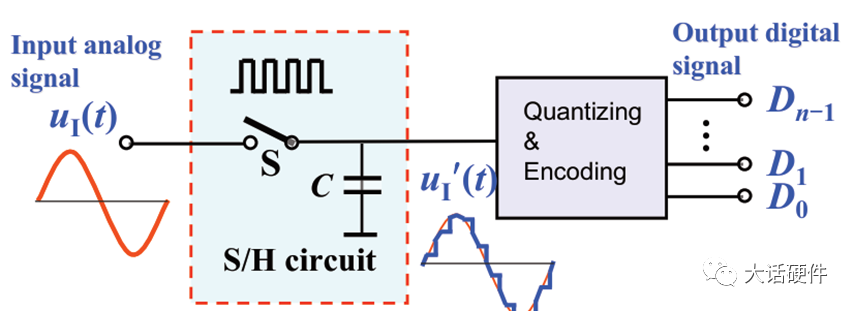
Currently, there are many types of ADCs available on the market. If we delve into the internal details of ADCs, the sampling and holding circuits are basically the same, but there are significant differences in the quantizing and encoding aspects. It is precisely these differences that give rise to different ADC architectures, such as SAR, pipeline, etc.
2.1 Sampling Theorem
Analog signals change continuously over time, while digital signals are discrete. To obtain the converted digital signal, the first step is to sample the analog signal. Because digital signals cannot be continuous over time, they can only sample the input signal at certain intervals. The number of samples taken per unit time of the analog signal is called the sampling rate, measured in Ksamples per second.
According to the Nyquist theorem, to restore the sampled signal to the input signal, it must satisfy:

Where fs is the sampling frequency, and fimax is the frequency of the highest frequency component of the input analog signal. In practical circuit design, the sampling frequency is typically 3 to 5 times that of the highest frequency.
During the sampling process, two theorems are often confused: the Nyquist sampling theorem and the Shannon sampling theorem, which is also called the Nyquist-Shannon sampling theorem. Relevant materials can be consulted for further study.
2.2 Sample and Hold Circuit
The core of the hold circuit is to maintain the sampled analog signal for a period of time, during which the signal must remain unchanged, allowing the subsequent digital circuit to complete quantization and encoding. Capacitors are typically used as holding devices after sampling. The principle is as follows:
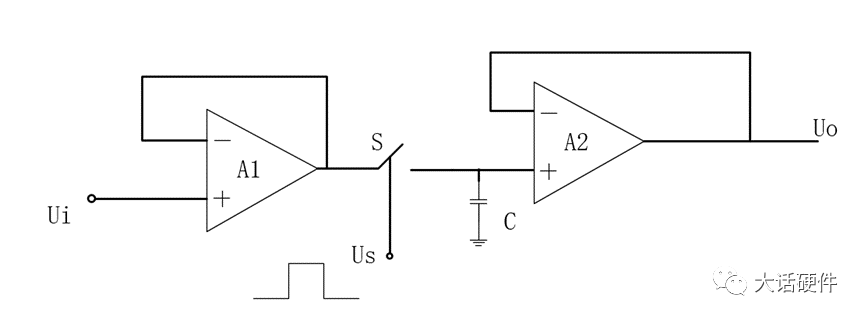
The capacitor C in the diagram is the hold capacitor. The sampling switch and hold capacitor are usually combined into a single unit known as the S/H circuit. A1 and A2 are two operational amplifiers configured as followers. These two operational amplifiers actually exist in the IC; A1 is used to isolate the preceding signal while utilizing the characteristic of infinite input resistance, and A2 is used to isolate the subsequent signal, utilizing the output impedance of 20 to 50Ω. Having operational amplifiers on both sides with the S/H circuit in between helps reduce noise.
Based on the principles of the sampling and holding circuits mentioned earlier, the first two processes can be simulated.
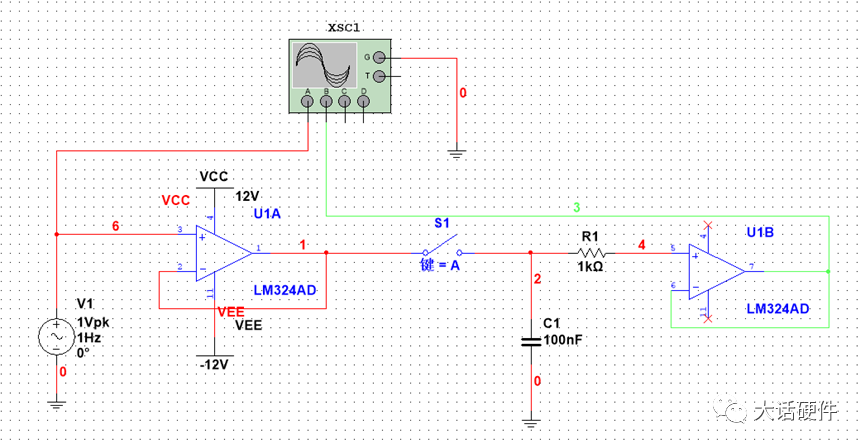
Assuming the sampling rate is relatively low, manual conditions can be met. From the waveform below, it can be seen that the red line represents the original waveform, and the blue line represents the sampled signal, which shows significant distortion, indicating that the sampled signal cannot be properly restored.
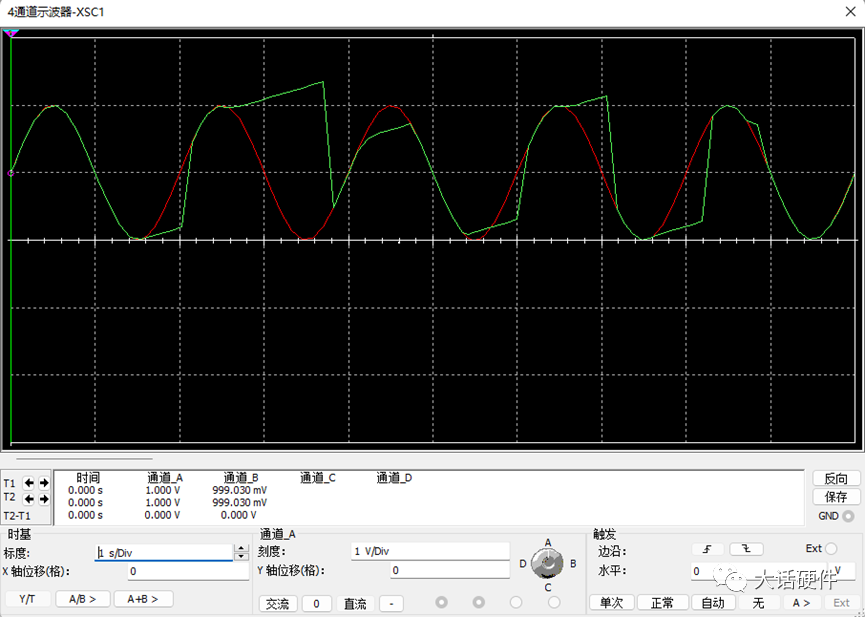
Using MOSFETs instead of switches and adding the sampling drive frequency, the simulation results show that the red waveform is the input signal, and the blue is the sampled signal, which can basically restore the input signal.
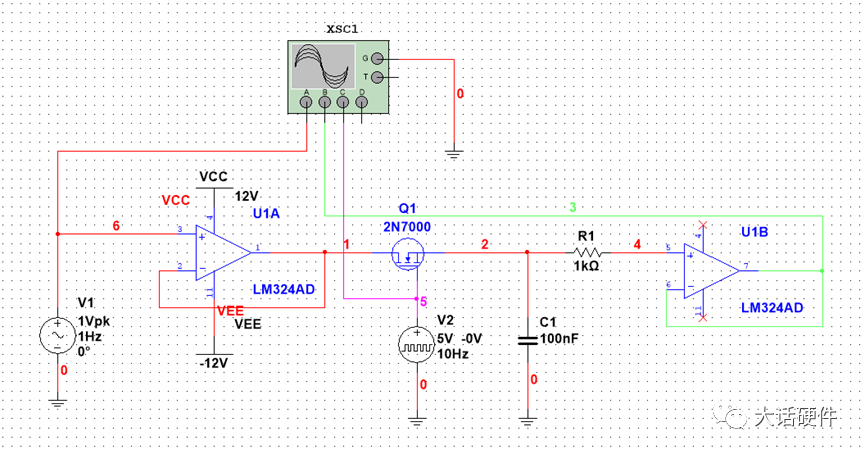
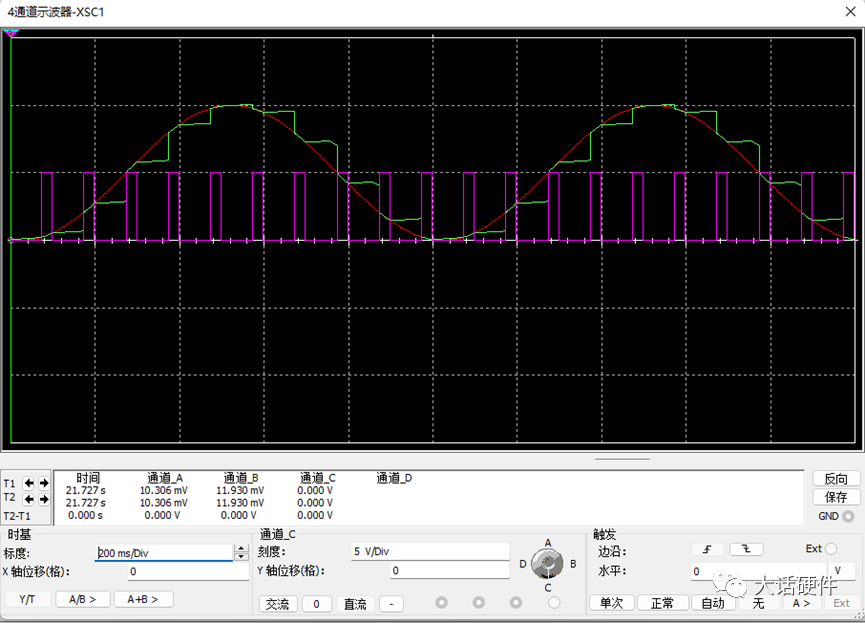
2.3 Quantization
Quantization refers to approximating a continuous analog signal with a finite number of discrete digital signals. The quantized analog signal is divided into a finite set of equal amplitude step sizes, as shown in the figure below. 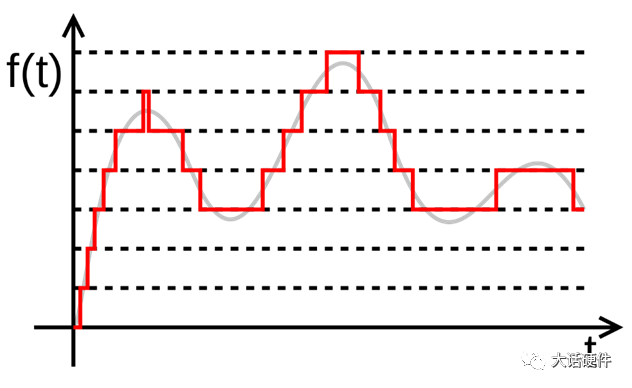
The original analog signal is continuous and infinite, while the digital signal used for quantization is discrete and finite. Therefore, during the quantization process, due to the limited number of step sizes, some analog signals will be represented by the same quantized value. As shown in the figure above, when the discrete digital signal reaches a certain value, the corresponding analog signal is continuously changing, resulting in a difference between the original quantized signal and the quantized value. This difference is known as quantization error.
According to the definition of quantization error, if we were to use an infinite number of discrete values to quantize the analog signal, then each step size would be a point, and it would be almost identical to the original signal, resulting in no quantization error. However, this is not practically possible, so the fundamental reason for the existence of quantization error is that the resolution used during quantization is finite.
Resolution and accuracy are often confused. In middle school physics, we learned that resolution describes the scale division, while accuracy describes the degree of correctness. For example, we have two rulers, both 10cm long; one ruler has 100 small divisions, while the other has 10 divisions. The former has a resolution of 1mm, while the latter has a resolution of 1cm. Clearly, the former has a higher resolution than the latter. In ADCs, the scale division is represented by the number of bits of the digital signal; for instance, an ideal 8-bit ADC has a lower resolution than an 18-bit ADC.
Accuracy indicates the error between the measured value and the true value or the extent to which the measured value deviates from the true value.Using two ADCs with the same resolution to measure the same analog quantity will not yield identical results. Ignoring quantization error, the ADC itself may deviate from the true value due to the influence of material and manufacturing processes. To describe the magnitude of this accuracy, absolute accuracy and relative accuracy are commonly used. Absolute accuracy is expressed as a multiple of voltage resolution (LSB), such as ±1/1LSB, ±1LSB, etc. Relative accuracy is expressed as a percentage of absolute accuracy divided by the full-scale value.
Different quantization encodings lead to different types of ADCs.
2.4 Encoding
Encoding is the final process of internal conversion in the ADC, where the quantized results are represented in binary or other numeral systems. After encoding, the original analog signal becomes a digital signal. The essence of encoding is to output a string of numerical codes that closely approximate the currently sampled analog value. Therefore, the method of quantization will determine the rules of encoding.
Now, consider a 3-bit ADC quantizing the input voltage from 0 to 1V. The process is as follows:
A 3-bit ADC can quantize the input signal into 8 equal step sizes.
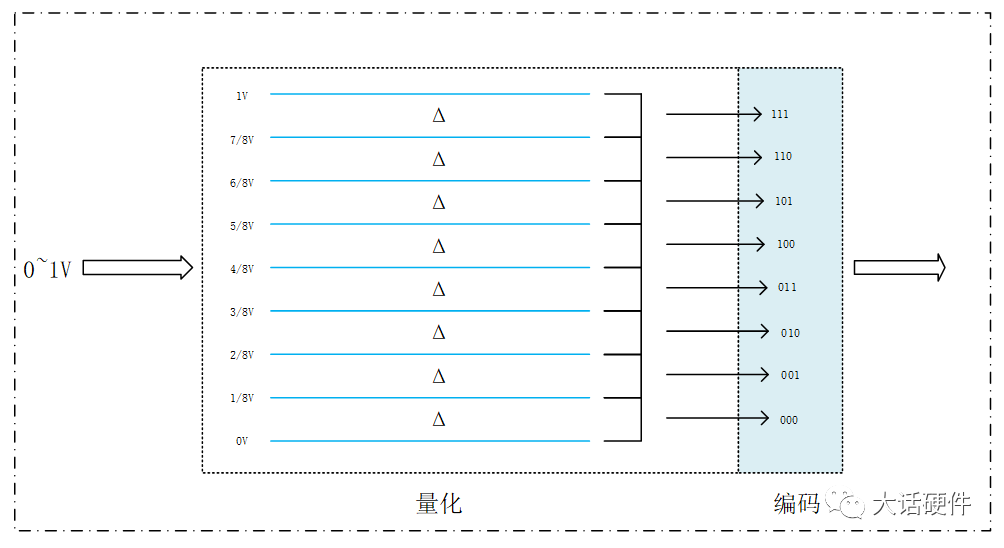
From the quantization process, it can be seen that when the input voltage is within any analog value between 0 and 1/8V, the output code is 000. When the voltage is between 1/8 and 2/8V, the output code is 001. Therefore, the maximum quantization error introduced by this quantization process is 1/8V, which corresponds to the value of the step size, or 1LSB. With increased resolution, the analog quantity can be quantized into more bits, thus reducing quantization error.
With the development of digital circuits, ADCs are used less frequently by most people, not because they are no longer needed, but because upstream chip companies have integrated ADCs into chips, outputting digital signals directly. However, whether in a separate signal chain or integrated within a chip, the overall framework of the ADC remains unchanged.
Author: Zero Degrees Below, Source: Dahuahardware
This article is reproduced with permission from the “Dahuahardware” public account. Reproduction is for learning reference only and does not represent this account’s endorsement of its views. This account does not bear any responsibility for its content, text, or images.
end


Recommended Reading
👉 Can’t tell the difference between analog and digital signals?
👉 The correct testing methods for power supply ripple
👉 7 methods to improve power supply design efficiency